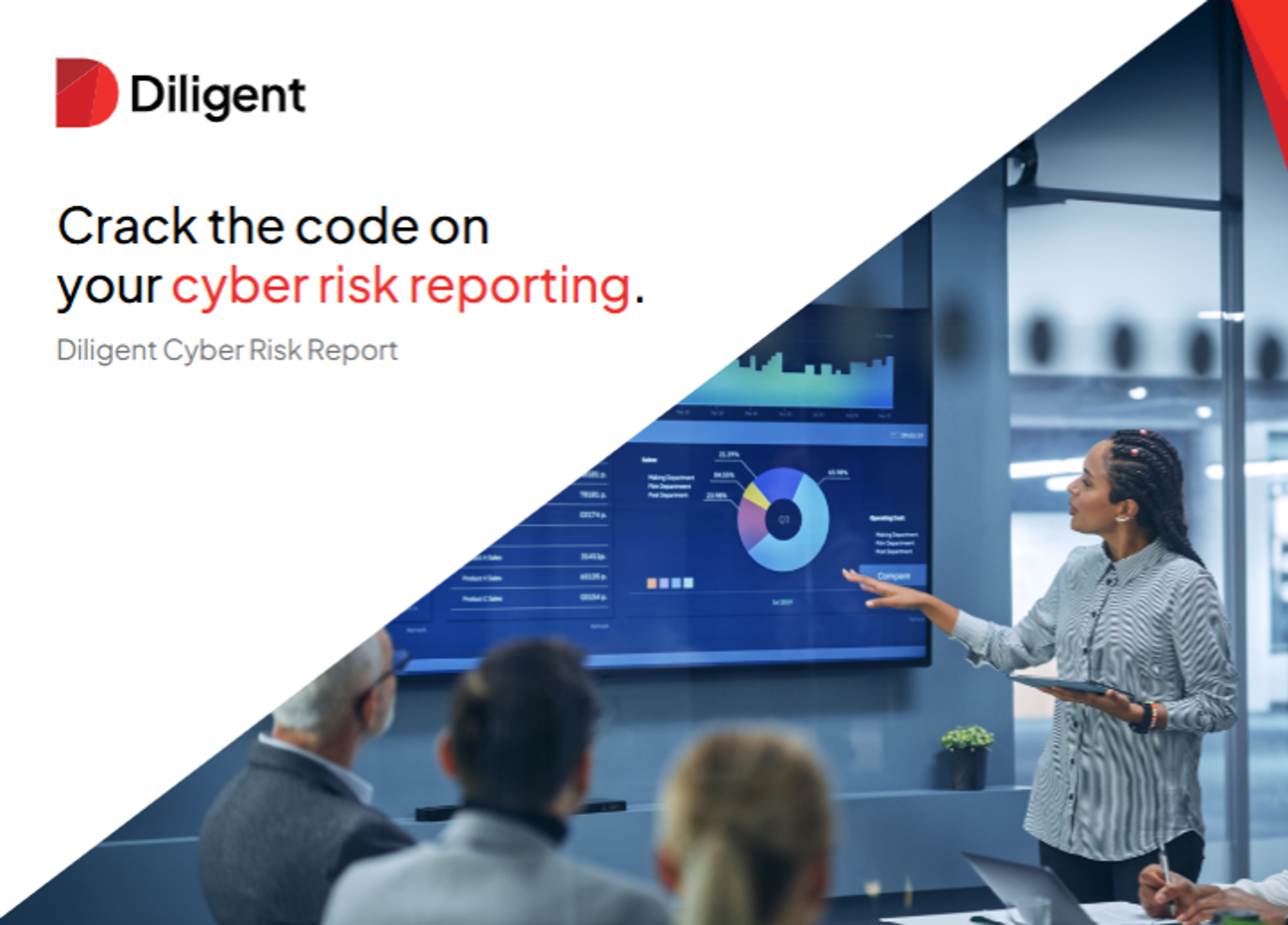AI's impact on cybersecurity risk management — and what it means for leadership

The convergence of artificial intelligence (AI) and cybersecurity is reshaping the way organizations defend against threats, manage compliance and oversee risk at the highest levels of leadership.
While AI presents unprecedented opportunities for cyber resilience, it also introduces new dimensions of risk that demand stronger oversight from the likes of CISOs, general counsels and boards.
Cyber threats are evolving at an unrelenting pace, with AI both powering defenses and amplifying adversarial tactics. Attackers now deploy AI-generated phishing campaigns, automate vulnerability exploitation and craft deepfakes that blur the lines between deception and reality. At the same time, AI-driven security solutions are revolutionizing threat detection, orchestrating real-time responses and enhancing supply chain security.
For business leaders, the challenge is no longer just whether to adopt AI for cybersecurity — it is how to oversee AI-driven cyber risk effectively while ensuring compliance with an increasingly complex regulatory landscape.
AI as a force multiplier in cybersecurity
For years, security teams have struggled to keep pace with cyber adversaries, hampered by resource constraints, alert fatigue and the limitations of traditional defense mechanisms. AI is changing the equation, empowering organizations to move from reactive security to proactive cyber risk management.
AI-driven threat detection models can analyze vast amounts of data in real time, identifying anomalies, insider threat, and zero-day attacks before they escalate. Security orchestration platforms leverage AI to automate incident response, reducing dwell time and enabling swift remediation. AI-enhanced risk intelligence provides deeper visibility into supply chain vulnerabilities, helping organizations preemptively address third-party risks.
Yet, while AI strengthens cybersecurity postures, it also expands the attack surface. Adversaries are exploiting AI’s capabilities to evade detection, manipulate security algorithms and deploy automated threats at scale. Without effective oversight, AI itself can become a liability — introducing bias, misinterpretations and compliance risks that could erode trust in cyber defense mechanisms.
As organizations integrate AI into their security ecosystems, CISOs, GCs and boards must together step up to govern AI-driven cyber risk with precision and foresight.

Leadership’s expanding cyber oversight responsibilities
The traditional lines between cybersecurity, legal and risk management are blurring as AI reshapes the regulatory and threat landscape. This shift demands greater alignment between business leaders to ensure AI-driven security decisions are both effective and legally defensible.
CISOs must evolve from security enforcers to strategic risk advisors, ensuring AI enhances cyber resilience without creating new vulnerabilities. AI-driven security tools must be tested for accuracy, explainability and fairness to prevent false positives and ensure compliance with data protection regulations.
General counsels play a pivotal role in navigating the legal complexities of AI in cybersecurity. With AI-powered cyber risk disclosures now under regulatory scrutiny — such as the SEC’s cybersecurity rules and the EU’s AI Act — GCs must ensure organizations remain compliant while mitigating liability risks associated with AI-driven security decisions.
Boards of directors, meanwhile, can no longer view cybersecurity as an IT issue. With AI driving both new defense capabilities and new regulatory expectations, boards must embed AI risk oversight into their governance frameworks, ensuring AI adoption aligns with the company’s broader risk strategy.
AI and the shifting regulatory landscape
Global regulators are moving swiftly to establish guardrails around AI’s role in cybersecurity and risk management. The United States, for instance, has introduced SEC rules requiring greater transparency in cyber risk reporting, including those related to AI, while the EU AI Act classifies certain AI applications in security as high risk, demanding stricter oversight. Australia, Singapore and other regions are also accelerating AI governance measures, signaling that AI’s role in cybersecurity is now a matter of increasing regulatory concern as well as a game-changing technological advancement.
These evolving frameworks underscore a critical reality: AI-driven cyber risk management is not just an operational priority — it is a governance imperative. Business leaders must be proactive, ensuring that AI-powered security systems meet compliance, transparency and ethical standards while remaining adaptable to emerging regulations.
Overcoming the challenges of AI-driven cyber risk management
While AI presents transformative opportunities, its adoption also comes with significant hurdles that security and risk leaders must address.
Resource constraints remain a challenge, as AI security solutions require specialized talent, ongoing training and infrastructure investments that many organizations struggle to meet. Data integrity and bias risks must be carefully managed to ensure AI models detect threats accurately without generating misleading insights. Many organizations also lack alignment between cybersecurity, legal and compliance teams, leading to fragmented risk oversight.
Regulatory uncertainty adds another layer of complexity. With AI policies evolving rapidly, organizations must ensure long-term compliance while mitigating liability risks associated with AI-driven security decisions. Successfully integrating AI into cyber risk oversight requires a structured approach, balancing innovation with responsible governance.

The path forward: Strengthening cyber risk oversight
To fully capitalize on AI’s potential while mitigating risks, organizations must take a holistic, leadership-driven approach to cyber risk oversight. This includes aligning cyber, legal and board leadership through AI risk governance committees that ensure security, compliance and corporate risk strategies are integrated. Implementing AI-specific risk controls, such as bias audits, explainability tests and continuous monitoring, is also essential to maintaining trust and transparency.
Building AI literacy at the executive level is another key step. Board members and senior leaders must be educated on AI-driven cyber threats, compliance obligations and governance best practices to make informed decisions. Additionally, leveraging AI for proactive compliance and risk intelligence through AI-enhanced governance, risk and compliance (GRC) platforms can help automate risk assessments, monitor regulatory changes and provide real-time insights into cyber threats.
AI is not just about automating cybersecurity operations — it is about elevating cyber risk management oversight. Organizations that integrate AI responsibly into their governance frameworks will not only enhance their security posture but also strengthen regulatory compliance and board-level decision-making.
Future-proofing cybersecurity leadership
As AI continues to shape the future of cybersecurity, organizations must adopt a forward-looking approach that blends technological innovation with rigorous risk oversight. CISOs must ensure AI enhances security without introducing unintended consequences. GCs must stay ahead of emerging legal frameworks to safeguard compliance. Boards must take a more active role in AI risk governance, embedding cybersecurity into their strategic decision-making processes.
By embracing AI-powered GRC tools, all three leadership areas can elevate cyber risk management oversight, ensuring organizations remain resilient in the face of evolving threats and regulatory expectations.
Get the Cyber Leadership Playbook
For actionable insights from industry experts on integrating AI into your cyber risk management and governance strategy, download the Cyber Leadership Playbook.
Yes, I'd like my free copyMore to explore

Crack the code on your cyber risk reporting
Find out how our Board Reporting Dashboard for Cyber Risk equips you to surface the right insights for more meaningful conversations with the board.

Cybersecurity governance: The board’s secret weapon for unlocking shareholder value
Discover how effective board oversight in cybersecurity drives resilience, boosts shareholder value, and safeguards long-term organizational success.

Outsmarting cyber risk: An exclusive look at the future of cybersecurity
Read our infographic for key insights from The Diligent Cyber Risk Virtual Summit.
